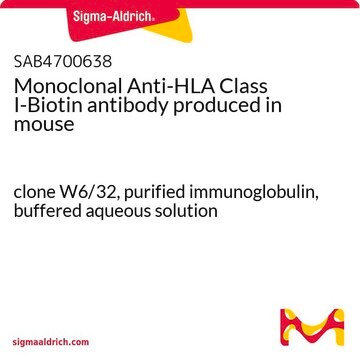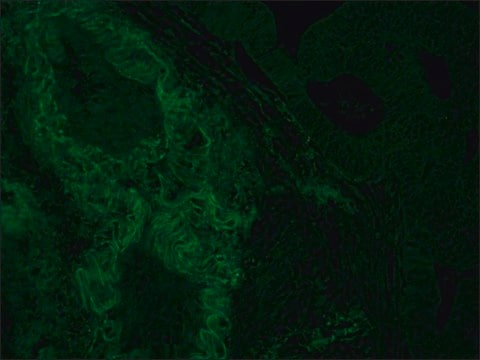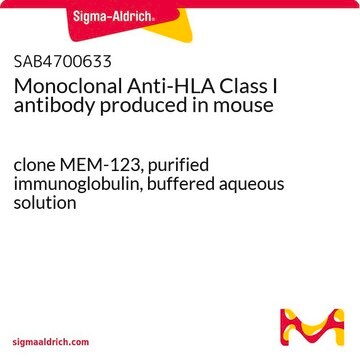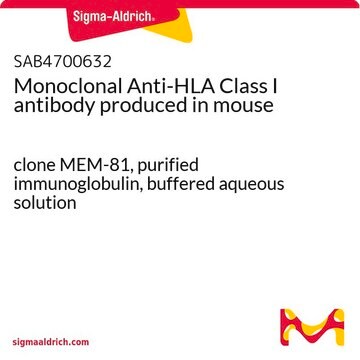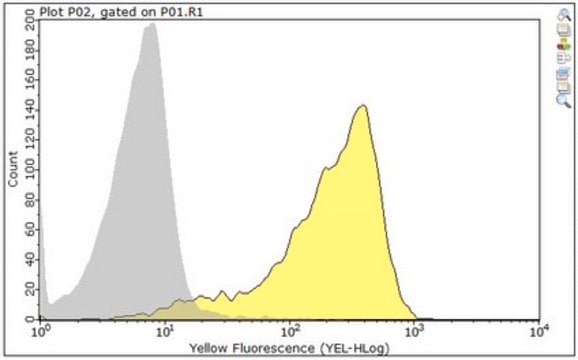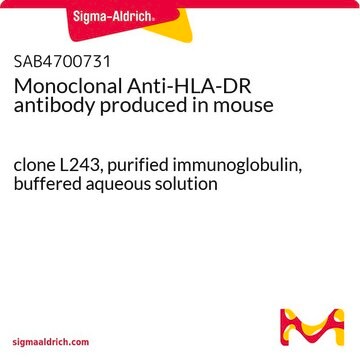H1650
Monoclonal Anti-HLA Class I Antigen antibody produced in mouse
clone W6/32, purified immunoglobulin, buffered aqueous solution
Sinónimos:
Monoclonal Anti-HLA Class I Antigen
About This Item
Productos recomendados
origen biológico
mouse
conjugado
unconjugated
forma del anticuerpo
purified immunoglobulin
tipo de anticuerpo
primary antibodies
clon
W6/32, monoclonal
formulario
buffered aqueous solution
reactividad de especies
monkey, human
técnicas
flow cytometry: 5 μL using 1 × 106 cells
immunoprecipitation (IP): suitable
indirect immunofluorescence: 1:10 using acetone-fixed human tonsil frozen sections.
isotipo
IgG2a
Nº de acceso UniProt
Condiciones de envío
wet ice
temp. de almacenamiento
2-8°C
modificación del objetivo postraduccional
unmodified
Información sobre el gen
human ... HLA-A(3105) , HLA-B(3106) , HLA-C(3107)
¿Está buscando productos similares? Visita Guía de comparación de productos
Descripción general
The previously assigned protein identifier P01891 has been merged into P04439. Full details can be found on the UniProt database.
Especificidad
4th Workshop: code no. P1
5th Workshop: code nos. BP166, BP288, BP407, B 005
Inmunógeno
Aplicación
Immunofluorescence (1 paper)
Acciones bioquímicas o fisiológicas
Forma física
Cláusula de descargo de responsabilidad
Not finding the right product?
Try our Herramienta de selección de productos.
Código de clase de almacenamiento
12 - Non Combustible Liquids
Clase de riesgo para el agua (WGK)
WGK 1
Punto de inflamabilidad (°F)
Not applicable
Punto de inflamabilidad (°C)
Not applicable
Certificados de análisis (COA)
Busque Certificados de análisis (COA) introduciendo el número de lote del producto. Los números de lote se encuentran en la etiqueta del producto después de las palabras «Lot» o «Batch»
¿Ya tiene este producto?
Encuentre la documentación para los productos que ha comprado recientemente en la Biblioteca de documentos.
Los clientes también vieron
Nuestro equipo de científicos tiene experiencia en todas las áreas de investigación: Ciencias de la vida, Ciencia de los materiales, Síntesis química, Cromatografía, Analítica y muchas otras.
Póngase en contacto con el Servicio técnico